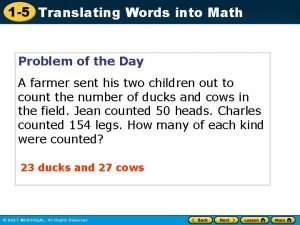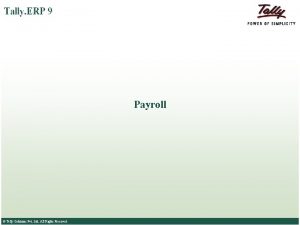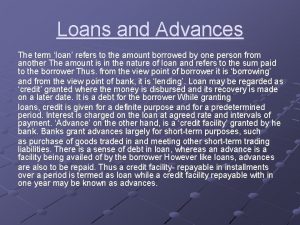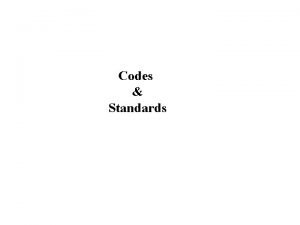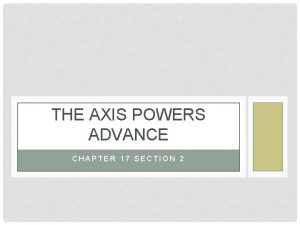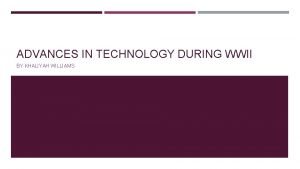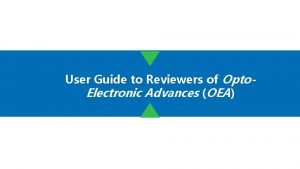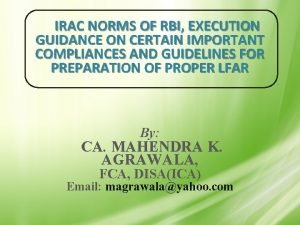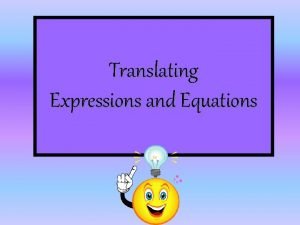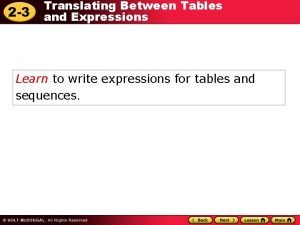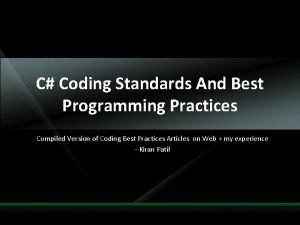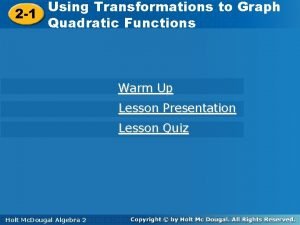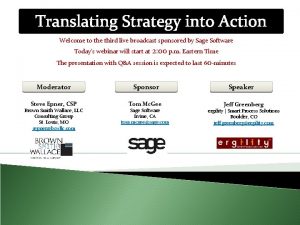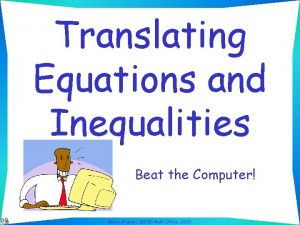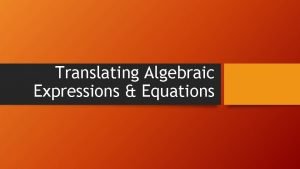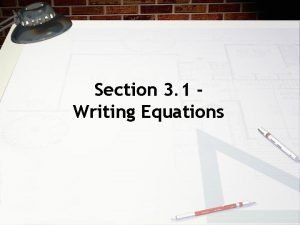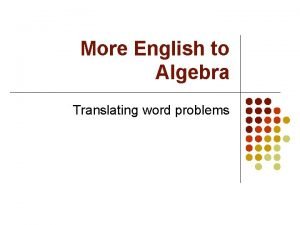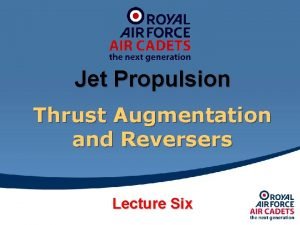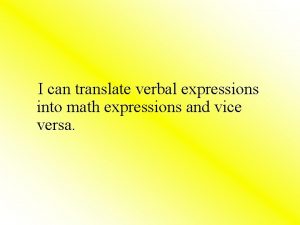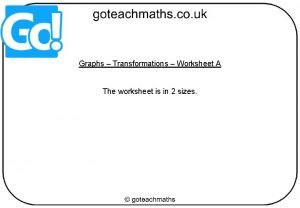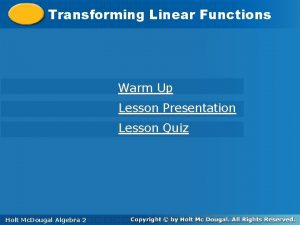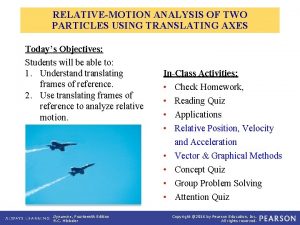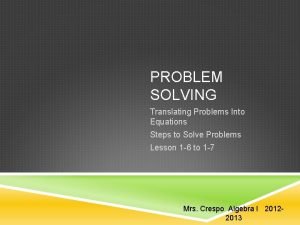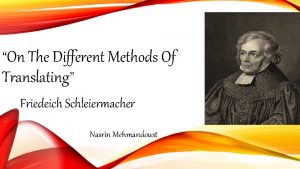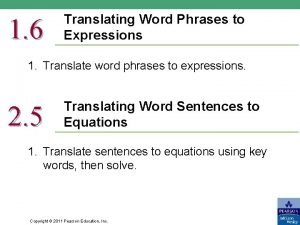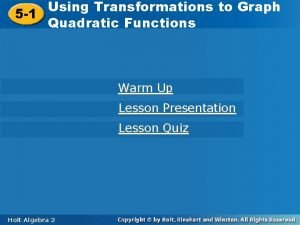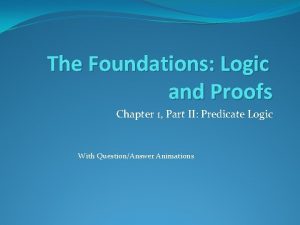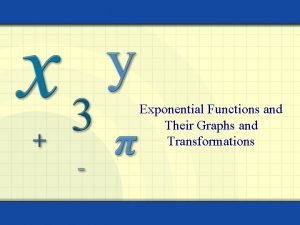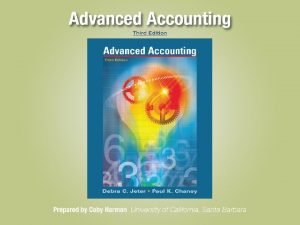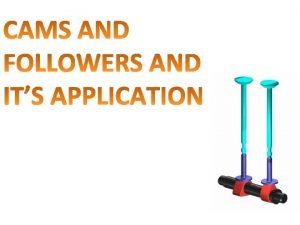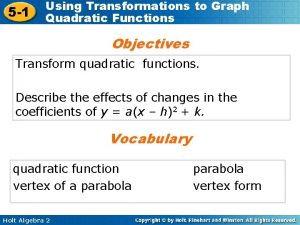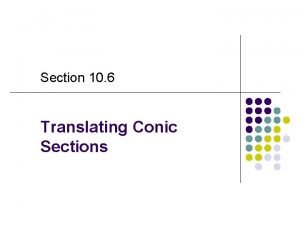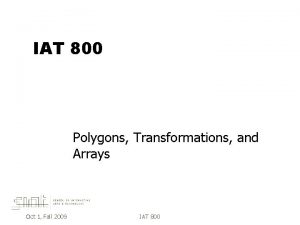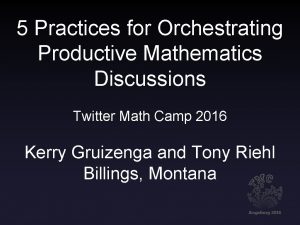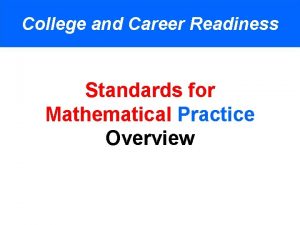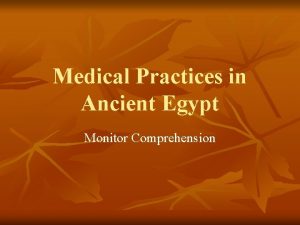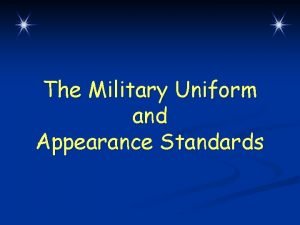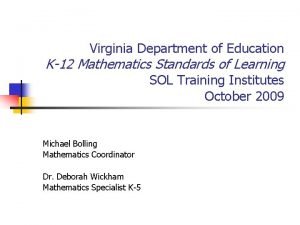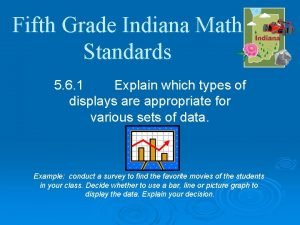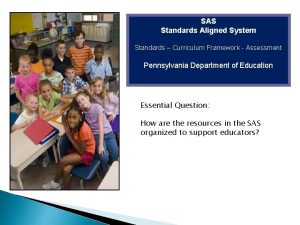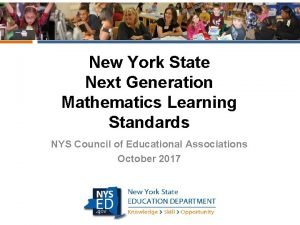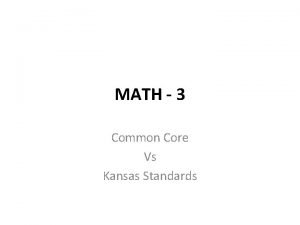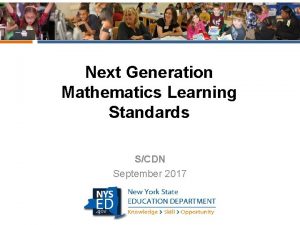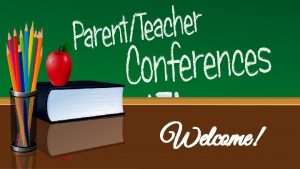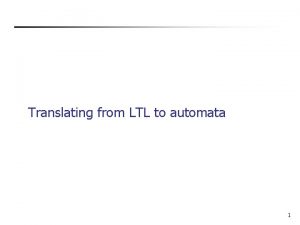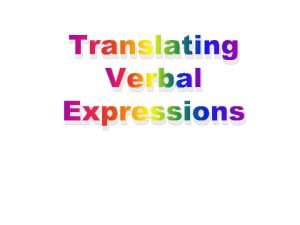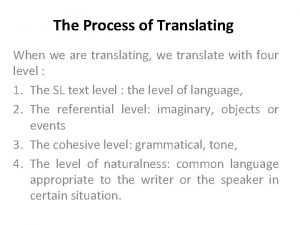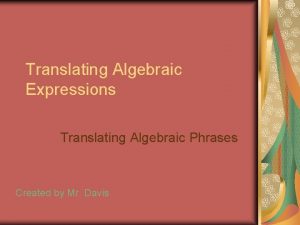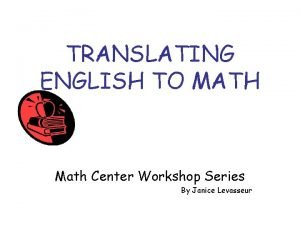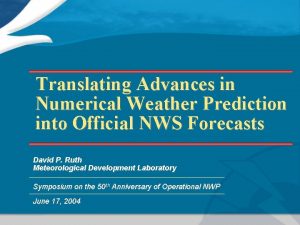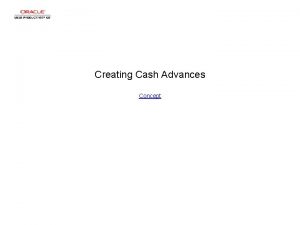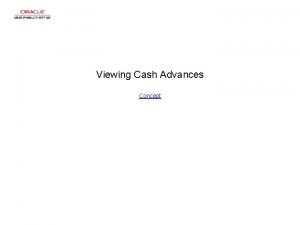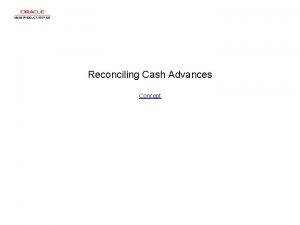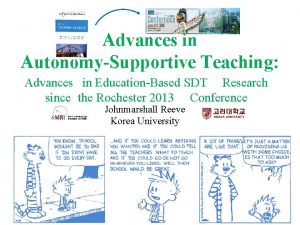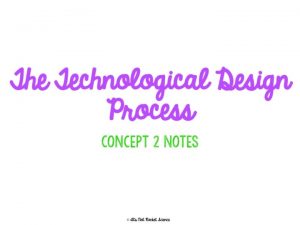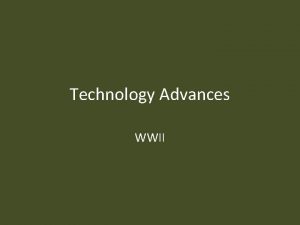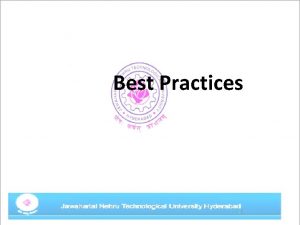Key Advances Math Practices and Translating Math Standards
















































![Checklist to Guide Mathematics Lesson Development [#6] • Is designed to accompany your development Checklist to Guide Mathematics Lesson Development [#6] • Is designed to accompany your development](https://slidetodoc.com/presentation_image_h/d1f67e6299b89e246a584f23d484ad2b/image-49.jpg)










- Slides: 59

Key Advances, Math Practices, and Translating Math Standards Into College and Career Readiness-Aligned Curriculum and Instruction

Acknowledgments Most of the materials included in this training and presentation are taken or adapted from materials developed by the U. S. Department of Educationsponsored College and Career Readiness Standards-in-Action initiative. Virginia participated in piloting CCR SIA materials for adult education. CCR SIA materials were developed by Standards. Work, Inc. , under contract by the U. S. Department of Education, Office of Career, Technical, and Adult Education. More information on federal professional development initiatives for adult education can be found on LINCS. 2

Benefits of the CCR Standards in AE § Aligned with 2014 GED® test assessment targets and 21 st century high school equivalency expectations § Based on employer, college, and community college input § Selected with adult learners in mind § Provide guidance (and continuity) from literacy level to advanced/HSE (High School Equivalancy) level 3

A Shift in Approach • Why is it important? – Broadens the scope beyond obtaining GED® credential – Gives teachers the “big picture” – Meets the needs of the student at a real life level 4

Sidebar about GED® Test What about the GED® test? • GED® test contains many CCR standards and is still important • Implementing CCR instruction will still be a part of GED® instruction but will go beyond that as an end goal • Teaching good math foundational skills vs. just teaching to one test • What about after your GED® credential? 5

Agenda for Workshop • Introduce the key advances for mathematics in CCRS • Introduce math practices for effective instruction • Discuss the resource alignment tool that may be used to evaluate a resource • Evaluate a lesson to determine alignment to CCR standards and math practices through the lesso 6

Three Key Advances Prompted by the CCR Standards in Mathematics 1. Focus: Focus strongly where the CCR Standards focus 2. Coherence: Design learning around coherent progressions from level to level 3. Rigor: Pursue conceptual understanding, procedural skill and fluency, and application— all with equal intensity 7

FOCUS § Focus means that some content is more important than other content and receives more time and attention. § Other content supports the more important content. § The Standards for Mathematical Practice (more on this later) become a critical focus in the CCR Standards and the mathematics curriculum. 8

Areas of Focus in the CCRS § Level A: Whole numbers - addition and subtraction concepts, skills, and problem-solving to 20; place value and whole number relationships to 100; and reasoning about geometric shapes and linear measures § Level B: Whole numbers and fractions - place value, comparison, and addition and subtraction to 1000; fluency to 100; multiplication and division to 100; fractions concepts, skills, and problem-solving; 2 -dimensional shape concepts; standard units for measuring time, liquid, and mass; and area measurements 9

Areas of Focus in CCRS (p. 2) § Level C: Positive whole numbers, fractions, and decimals fluency with multi-digit whole number and decimal operations; decimal place value concepts and skills to thousandths; comparing, ordering, and operating with fractions; fluency with sums and differences of fractions; understanding rates and ratios; early expressions and equations; area, surface area, and volume; classification of 2 -dimensional shapes; and developing understanding of data distributions, including creating dot plots in the coordinate plane 10

Areas of Focus in CCRS (p. 3) § Level D: Rational numbers—fluent arithmetic of positive and negative rational numbers; applying rates, ratios, and proportions; applying linear expressions, equations, and functions; systems of linear equations; classification and analysis of 2 - and 3 -dimensional figures; developing similarity and congruence concepts, including problems of scale; solving right triangles using the Pythagorean theorem; random sampling of populations to summarize, describe, display, interpret, and draw inferences; bivariate data and a line of good fit; and development of probability concepts 11

Areas of Focus in CCRS (p. 4) § Level E: Real numbers—extending number system to include all real numbers; equivalent expressions involving radicals and rational exponents; reasoning about units and levels of precision; linear, quadratic, and exponential expressions, equations, and functions; linear inequalities; algebraic and graphic models of functions; applying similarity and congruence to 2 -dimensional figures; and analyzing 1 - and 2 variable data sets, including using frequency tables 12

Activity 1. Circle the topics on the worksheet for each level that are part of the major focus for that level. 2. Use the Major Work of the Levels resource to help you make your decisions. Reference a copy of the CCR Standards, if needed. 3. Discuss your selections and rationales at your table. On the following slide, there are some questions to guide your discussion. 13

Discussion Questions § What are some rationales for why you did or did not circle a particular topic as critical to the level? § Did anyone have a hard time deciding to which critical area a topic belongs? Tell us where and why. § Are any of the lesson objectives that you did not select for the given level critical to a different level? § Do you think that any of the topics you did not select are important to teach? If so, how might you relate them to one of the critical areas for the level? 14

Reflections § Focusing on fewer topics allows students to develop a deeper understanding of the content that matters most. § There’s so much mathematics that students could be learning, why limit what students are taught? 15

Coherence § Understand the research base (next slide) that explains the importance of coherence in standards and curricula. § Extend understanding about the focus of content in each level to include coherence within and across the levels. § Develop an understanding of the progressions of critical concepts across the CCR levels as a foundation for developing a coherent and rigorous mathematics curriculum. 16

Rationale for Coherence Relevance and Importance Based on the Research emanating from TIMSS and the ACT National Curriculum Survey support the premise that coherent standards and curricula are important for college and career readiness: § Coherence allows students to demonstrate new understanding built on foundations from previous study. § Coherence prevents standards from being a list of isolated topics. § Coherence means that each standard is not a new event, but rather an extension of previous learning. 17

Implications for Coherence § Content unfolds meaningfully. § Connections between concepts are made both within and across the levels. § Students and teachers expect knowledge and skills to build and grow. 18

Activity 1. Identify the progression topic to which each color-coded group of standards belongs: fluency with operations, expressions and equations, or real-world applications. 2. Begin with the fluency (blue) cards. Use knowledge of how concepts and skills build on one another to organize the color-coded cards in a logical order of progression from the lowest to the highest level. 3. Use knowledge of the CCR Standards and Major Work of the Levels resource to help identify the level (A, B, C, D, or E) for each standard on a fluency card. 19

Directions (cont’d) 4. Share results with others at your table, and discuss any points of agreement and disagreement. 5. Repeat steps 2 through 4 for expressions and equations (yellow) and real-world applications (green) cards. 20

Reflections 1 § How has participating in this activity changed your thinking about the CCR standards? § How will you use the information and understanding you have acquired to improve your teaching practice and student learning? § What additional training and tools would strengthen your ability to do so? 21

Rigor in lessons relates to the depth at which the major work of each level should be addressed: § Conceptual Understanding: Comprehending key concepts behind the procedures § Fluency: Gaining speed and accuracy in applying procedures § Application: Supporting problem-solving and deeper mathematical thinking 22

Rationale for Rigor Relevance and Importance Based on the Research § Surveys of employers and professors of first-year credit-bearing mathematics courses validate the importance of rigor in instruction. • Students with solid conceptual understanding can generalize and apply concepts from several perspectives. • Students who can perform calculations with speed and accuracy (fluency) are able to access more complex concepts and procedures. • When students have the ability to use math flexibly, they are able to apply their knowledge to solve problems. 23

Activity 2 1. Check the component(s) of rigor likely to be required in a lesson, activity, or task that targets each CCR standard on the Engaging the Three Components of Rigor worksheet. Make notes about your rationales. 2. Discuss your reasoning at your table, using the four questions listed on the following slide. 24

Discussion Questions 2 1. What makes you think a particular component of rigor applies? 2. Are there certain words or phrases in the standard that provide clues? 3. Which components of rigor might appear together in a single standard? Explain. 4. Which components of rigor are not likely to appear together in a single standard? Explain. 25

Reflections 2 § How do you define “real-world” in application problems? § Is it enough to give very difficult problems to students to advance rigor in a lesson? § How can we separate difficulty of technique from rigorous thinking? § In what way(s) did your understanding of the meaning of “rigor” change as a result of this activity? 26

Math Practices • What are math practices? – Math practices describe a variety of expertise at all levels that educators should seek to develop in their students. • Why are they important? – When math practices are linked to content, deeper understanding can occur enabling students to extend their learning to new situations. – Emphasis shifts to “learning how to learn” vs. learning “how to get the answer. ” 27

An Argument for the Standards Quote from Fabio Milner (CCRS math coach) “The frequently maligned Standards for Mathematical Practices are really habits of mind that refer to higherorder thinking skills empowering individuals able to use them to present better arguments, to understand criticize the logical flaws of statements and arguments presented by the media, politicians, friends, and others, to become better problem-solvers, to make good conjectures and generalizations, to express themselves more clearly and accurately. “And note that I am not talking about mathematics, but rather in any arena. I think this constitutes a powerful argument in favor of the CCR standards. ” 28

Math Practice 1 Make sense of problems and persevere in solving them. “Understand the problem, find a way to attack it, and work until it is done” 29

Math Practice 2 Reason abstractly and quantitatively. “Students should be able to break a problem apart and show it symbolically, with pictures, or in any way other than the standard algorithms” 30

Math Practice 3 Construct viable arguments and critique the reasoning of others. “I can talk about math, using mathematical language, to support or oppose the work of others” 31

Math Practice 4 Model with mathematics. “I can use math to solve real-world problems, organize data, and understand the world around me” 32

Math Practice 5 Use appropriate tools strategically. “I can select appropriate math tools and use them correctly to solve problems” 33

Math Practice 6 Attend to precision. “Students speak and solve mathematics with exactness and meticulousness” 34

Math Practice 7 Look for and make use of structure. “I can find patterns and repeated reasoning that can help solve more complex problems” 35

Math Practice 8 Look for and express regularity in repeated reasoning. “Students keep an eye on the big picture while working out the details of a problem” 36

Implications of the Standards for Mathematical Practice on Instruction § The Standards for Mathematical Practice are applied across all levels. § Not all Standards for Mathematical Practice are appropriate for every lesson. § Students need opportunities to experience all of the Standards for Mathematical Practice over the course of the unit or the level of study. 37

Activity 3 Consider the following problem: A pencil and eraser together cost $1. 10. The pencil cost $1 more than the eraser. How much does the eraser cost? 1. Which Standards for Mathematical Practice are central to answering this question correctly? 2. How could you enhance this question to better include standards for Mathematical Practices that you identified? 38

Activity Directions (cont’d) 3. Working independently, come up with a problem or lesson that will involve using one or more Standards for Mathematical Practices when a student is given the problem. 4. Discuss individual decisions and rationales at your table, including how the different types of problems/lessons imagined would affect the relevance of a particular Standard for Mathematical Practice. 39

Reflections 3 § What are some of the Standards for Mathematical Practice that you think are central to the problem/lesson? § What are some of the Standards for Mathematical Practice that you think might serve in a supporting capacity to the problem? § Why is it important to emphasize the Standards for Mathematical Practice at all levels of adult learning? 40

Questions and Comments 41

Translating the Standards & Advances to Curriculum & Lessons • Discussion about Revising a Resource to Improve Alignment to CCR Standards • Creating CCR-Aligned Lessons 42

A Note about Resources • No one resource will be perfect; some resources are better than others. • How can we make sure our current resources better align with the CCRS? 43

Key Advances That Frame the Resource Evaluation in Mathematics 1. Focus: Does the resource focus strongly where the standards focus, including the relevant Standards for Mathematical Practice? 2. Coherence: Does the resource design learning around coherent progressions between levels and within the level? 3. Rigor: Does the resource pursue conceptual understanding, procedural skill and fluency, and application with equal intensity? 44

Math Lessons and Content • Math practices should be integrated into lessons. • Not all math practices can be present in all lessons/problems. • All math practice opportunities should be experienced over the course of the unit/class. 45

Sample CCR-Aligned Lesson Selected lesson: See handout This lesson includes essential CCR content, including: • Clearly identified CCR content standards for level D. • At least one Standard for Mathematical Practice, linked to the lesson activities. • A clear, essential question, related to the lesson objectives. 46

Practice at Your Table • Complete items 5 through 7 of the Lesson Revision Template [#5]: o Specify the learning goals of the lesson. o Identify the key CCR standards of the lesson. o Identify math practices that are evident in the lesson. • Use the CCR Content Progressions to help you. 47

Group Debrief 1. Did the lesson focus on a major work of the level? 2. What CCR standards did you select? 3. What key advances (Focus, Coherence, and Rigor) are evident or not evident in the lesson and or resource? 4. What math practices are evident in the lesson? 48
![Checklist to Guide Mathematics Lesson Development 6 Is designed to accompany your development Checklist to Guide Mathematics Lesson Development [#6] • Is designed to accompany your development](https://slidetodoc.com/presentation_image_h/d1f67e6299b89e246a584f23d484ad2b/image-49.jpg)
Checklist to Guide Mathematics Lesson Development [#6] • Is designed to accompany your development or revision of a lesson. • Reflects much of the content in the Lesson Revision Template [#5]. • Serves as a final quality check of a lesson for the lesson. 49

Work to Strengthen the Lesson Now, using the checklist (#6) and your notes, work to strengthen this lesson. 50

Apply the Checklist to Guide Mathematics Lesson Development Fill out section 1 of the checklist: • What are the learning goals for the students in this lesson? Are they defined? • How long do you think this lesson would take to complete? Does the lesson define this? Add notes about any refinements you might make to the lesson. 51

Apply the Checklist– Section 2 Fill out section 2 of the checklist: • What CCR content standards are targeted? • Do they represent the major work of the level? (Use the CCR Content Progressions [#2] to help you. ) Add notes about any refinements you might make to the lesson. 52

Apply the Checklist– Section 3 Fill out section 3 of the checklist: • Which specific Standards for Mathematical Practice are already included in the lesson? • Are there other practices that are central to the lesson goals? • Is there information about how the practices should be observed and assessed? (Use the Standards for Mathematical Practice [#3] to help you. ) Add notes about any refinements you might make to the lesson. 53

Apply the Checklist– Section 4 Fill out section 4 of the checklist: • What foundational knowledge is needed to succeed in this lesson? Does the lesson define this? • How do concepts acquired in this lesson support future learning? Does the lesson define this? (Use the CCR Content Progressions [#2] to help you identify concepts for foundational and future learning. ) Add notes about any refinements you might make to the lesson. 54

Apply the Checklist– Section 5 Fill out section 5 of the checklist: • Which aspect(s) of rigor do the targeted standards require? • Do the lesson activities address those aspects? • Does the lesson include thought-provoking tasks? • Would additional tasks, activities, and problems strengthen the lesson? Add notes about any refinements you might make to the lesson. 55

Apply the Checklist– Section 6 Fill out section 6 of the checklist: • What explanations, representations, and/or examples are included in the lesson to make its mathematics concepts clear? Add notes about any refinements you might make to the lesson. 56

Apply the Checklist– Section 7 Fill out section 7 of the checklist: • When does student sharing happen in the lesson? Does the lesson identify this? • What are the expected responses to the discussion questions? • Does the lesson tell us how to judge student understanding based on the discussion? Add notes about any refinements you might make to the lesson. 57

Apply the Checklist– Section 8 Fill out section 8 of the checklist: • What strategies and opportunities are used to check for student understanding throughout the lesson? Add notes about any refinements you might make to the lesson. 58

Group Debrief 2 • What kinds of additions did you make to the lesson to strengthen it? • What challenges did you encounter if any? • Where would the sample lesson best be positioned in a sequence of learning? • What connections did you see to your own lessons, teaching, or planning process? 59
 1-5 translating sentences into equations
1-5 translating sentences into equations Taly payroll
Taly payroll Short term loans and advances
Short term loans and advances Lurbinectedin posologie
Lurbinectedin posologie Codes standards and practices lesson 2
Codes standards and practices lesson 2 Chapter 17 section 2 the axis advances
Chapter 17 section 2 the axis advances Advances in technology during wwii
Advances in technology during wwii Intellectual development of infants chapter 9
Intellectual development of infants chapter 9 Advances in real time rendering
Advances in real time rendering Coherent scattering
Coherent scattering Opto-electronic advances
Opto-electronic advances Recent advances in dental ceramics
Recent advances in dental ceramics Irac circular rbi
Irac circular rbi Advances in memory technology
Advances in memory technology Translating expressions and equations
Translating expressions and equations Translating between tables and expressions
Translating between tables and expressions Data center standards best practices
Data center standards best practices Best programming practices
Best programming practices Customer service standards table
Customer service standards table Transformations of quadratic graphs
Transformations of quadratic graphs Translating strategy into action
Translating strategy into action Translating linear inequalities
Translating linear inequalities Translate algebraic expressions
Translate algebraic expressions Translating a sentence into a one step equation
Translating a sentence into a one step equation Two less than a number
Two less than a number Clamshell door system
Clamshell door system 1/8 y as a verbal expression
1/8 y as a verbal expression Graph transformations
Graph transformations Transforming linear functions algebra 2
Transforming linear functions algebra 2 Relative motion of two particles using translating axes
Relative motion of two particles using translating axes How to turn word problems into equations
How to turn word problems into equations Domestication in translation studies
Domestication in translation studies Translating phrases
Translating phrases Translating quadratic functions
Translating quadratic functions Translating english into logical expressions
Translating english into logical expressions How thrust reversers work
How thrust reversers work Waterfall compound word
Waterfall compound word Exponential graph transformations
Exponential graph transformations Translating research findings to clinical nursing practice
Translating research findings to clinical nursing practice Translating financial statements
Translating financial statements Translating contracts
Translating contracts Cam follower definition
Cam follower definition Translating quadratic functions
Translating quadratic functions Translating chemical equations
Translating chemical equations Translating conic sections
Translating conic sections Translating ore polygons
Translating ore polygons Key activity adalah
Key activity adalah Key partners key activities key resources
Key partners key activities key resources 5 practices for orchestrating productive math discussions
5 practices for orchestrating productive math discussions College and career readiness standards math
College and career readiness standards math Medical practices in ancient egypt answer key
Medical practices in ancient egypt answer key Cadet appearance and grooming standards answer key
Cadet appearance and grooming standards answer key Vdoe geometry standards 2016
Vdoe geometry standards 2016 Indiana 3rd grade math standards
Indiana 3rd grade math standards Standard aligned system
Standard aligned system Next generation learning standards nys
Next generation learning standards nys Math standards kansas
Math standards kansas Nys next generation math standards
Nys next generation math standards Utah core math standards
Utah core math standards Oklahoma state standards
Oklahoma state standards
